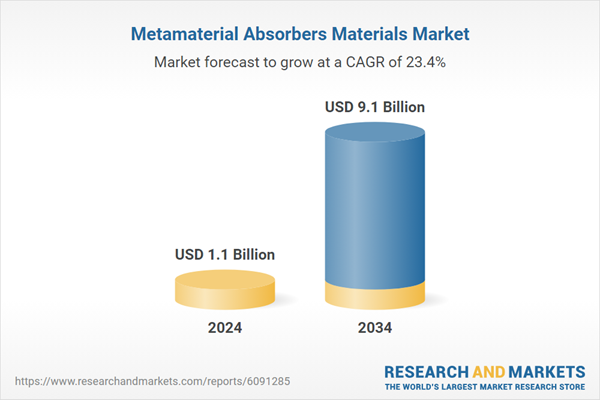These advanced materials deliver near-complete absorption performance by manipulating electromagnetic waves with engineered structures. Such absorbers are now essential for improving stealth capabilities and minimizing reflection in both civil and military uses. Recent technological developments have produced broadband absorbers through advanced manufacturing processes, making them valuable for environmental electromagnetic control and radar blocking. With design flexibility and strong performance, metamaterial absorbers integrate into next-generation aerospace, automotive, and defense systems.
Based on frequency segmentation, microwave frequency absorbers held the largest share at 38.6% in 2024 due to their ability to effectively dampen electromagnetic waves while being lightweight and adaptable for military use. These materials are highly effective in reducing radar detection by minimizing the radar cross-section, which enhances stealth capabilities in defense applications. Their efficiency and ease of integration make them the preferred choice across security-focused industries. Market dominance in this segment has been reinforced through ongoing innovation expanding angular range and bandwidth.
The radar system applications segment held a 33.8% share in 2024, driven by metamaterials’ unmatched ability to enhance detection precision and reduce radar cross-section signatures. These materials allow radar systems to operate effectively by integrating lightweight, compact components that consume less power while delivering superior electromagnetic wave absorption. The performance benefits of metamaterial absorbers make them ideal for modern radar applications where speed, accuracy, and stealth are vital. Ongoing funding from defense and homeland security departments is accelerating innovation, with strategic emphasis on increasing system sensitivity while minimizing detectability. As research deepens, radar integration continues to stand out as a prime sector fueling growth in the metamaterial absorbers materials market.
United States Metamaterial Absorbers Materials Market held an 84% share in 2024 and generated USD 200 million reinforced by advanced military capabilities, a robust scientific infrastructure, and dedicated support from federal agencies for next-generation defense technologies. The U.S. has been at the forefront of developing and deploying metamaterials for high-performance defense and communication systems. With continued innovation, the region maintains its lead through strategic investment in R&D, defense modernization programs, and active collaboration between government institutions and private industry stakeholders.
Key companies in this market include Kymeta, Meta Materials Inc., Metamagnetics, TeraView, and Echodyne. These players are advancing by investing in proprietary technologies, expanding their product portfolios, forming strategic alliances, and leveraging government-backed R&D programs. They are also scaling production capacities and exploring defense-grade certifications to enhance global competitiveness.
Comprehensive Market Analysis and Forecast
- Industry trends, key growth drivers, challenges, future opportunities, and regulatory landscape
- Competitive landscape with Porter’s Five Forces and PESTEL analysis
- Market size, segmentation, and regional forecasts
- In-depth company profiles, business strategies, financial insights, and SWOT analysis
This product will be delivered within 2-4 business days.
Table of Contents
Companies Mentioned
The companies featured in this metamaterial absorbers materials market report include:- Echodyne
- Entuple Technologies
- E-SONG EMC
- JEM Engineering
- Kymeta
- Meta Materials
- Metamagnetics
- MetaShield
- Microwave Measurement System
- Nanohmics
- Phoebus Optoelectronics
- TeraView
Table Information
| Report Attribute | Details |
|---|---|
| No. of Pages | 220 |
| Published | April 2025 |
| Forecast Period | 2024 - 2034 |
| Estimated Market Value ( USD | $ 1.1 Billion |
| Forecasted Market Value ( USD | $ 9.1 Billion |
| Compound Annual Growth Rate | 23.4% |
| Regions Covered | Global |
| No. of Companies Mentioned | 13 |









